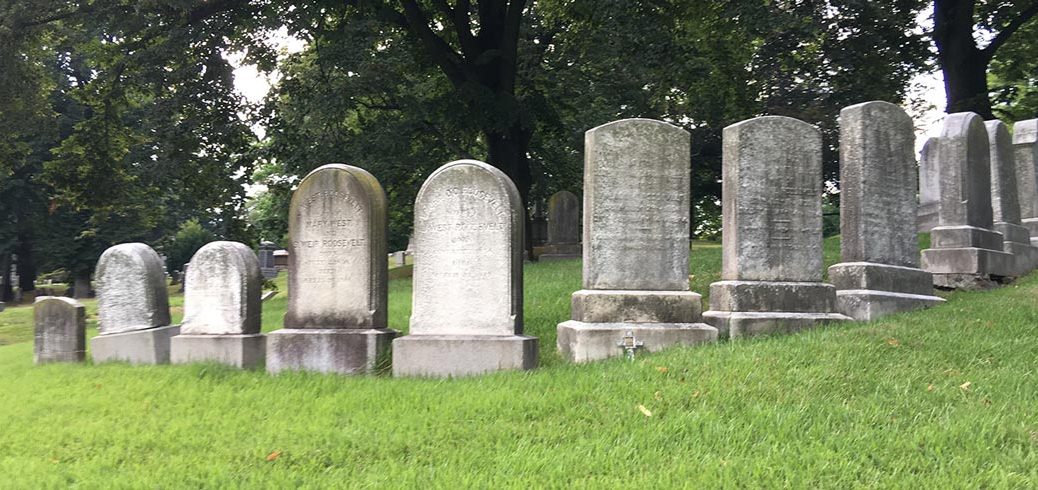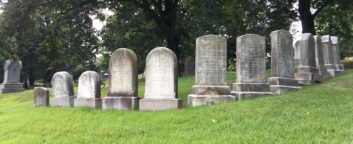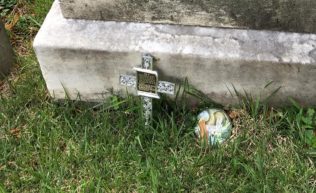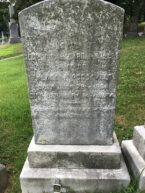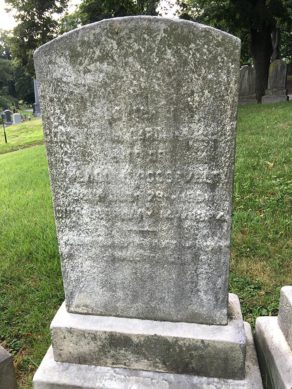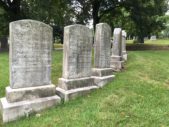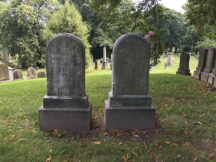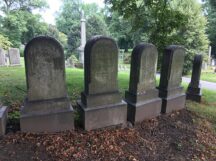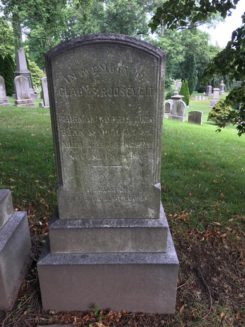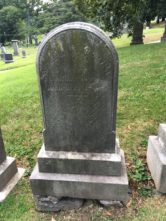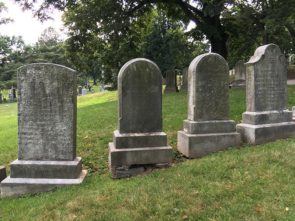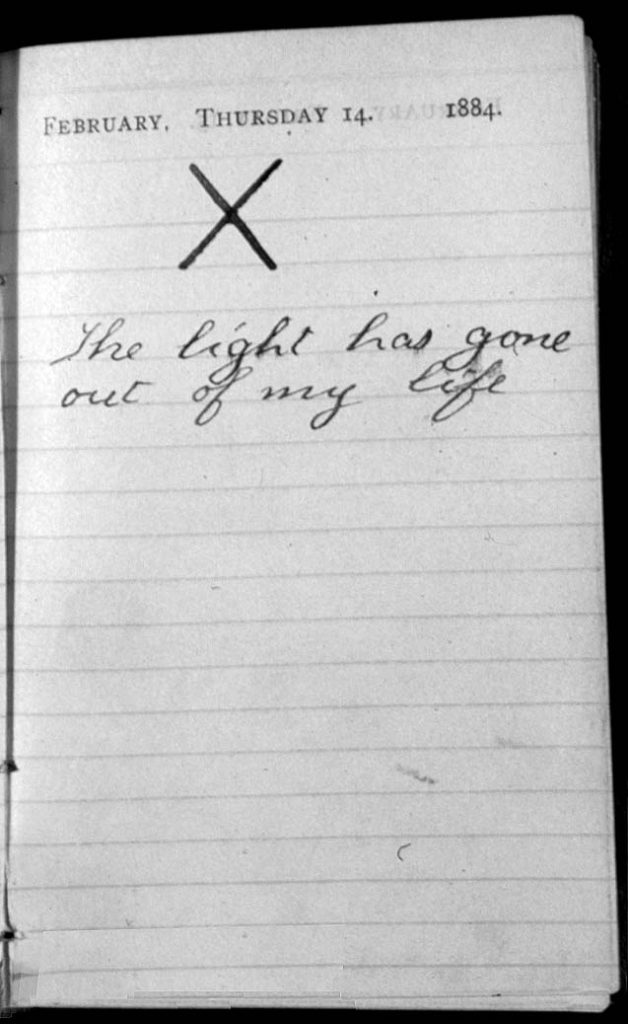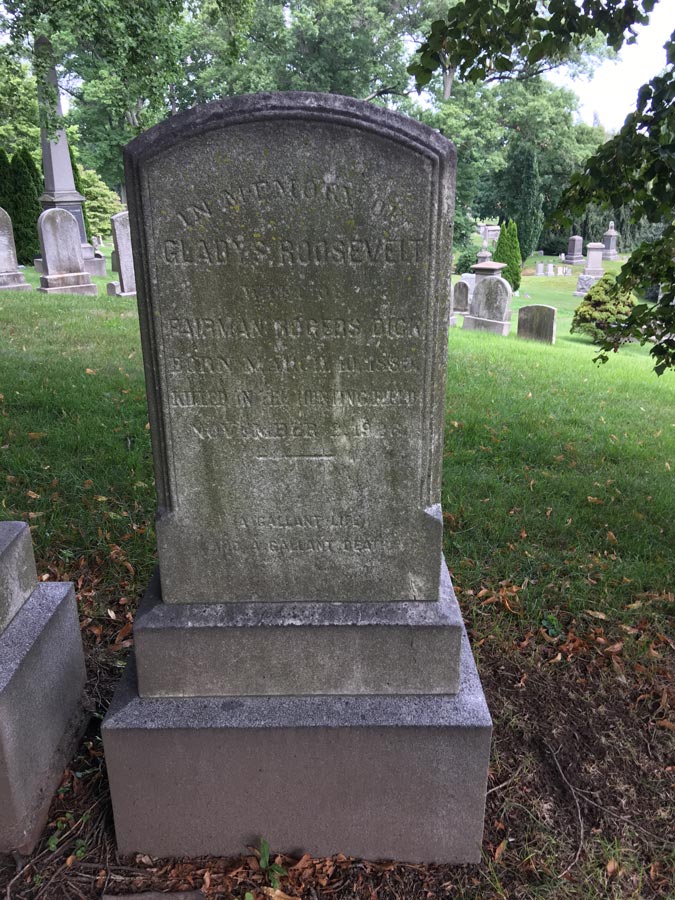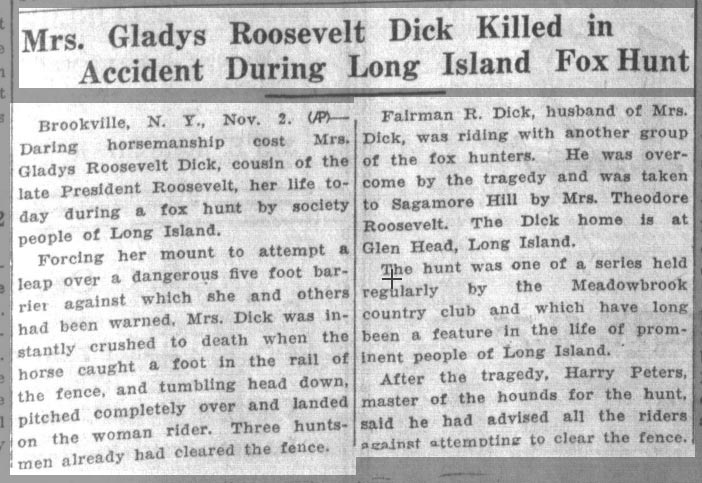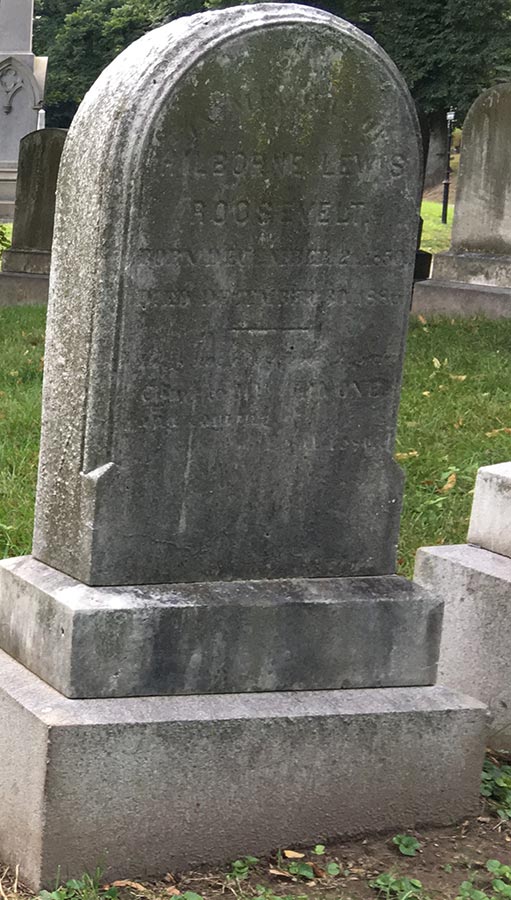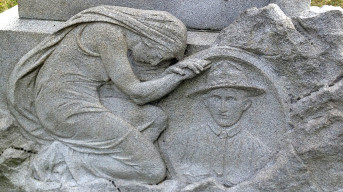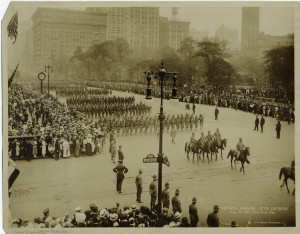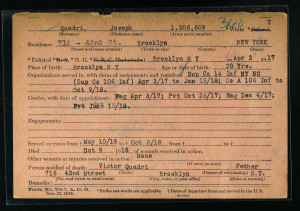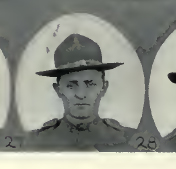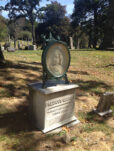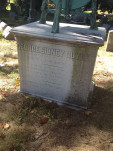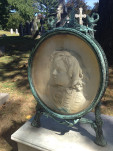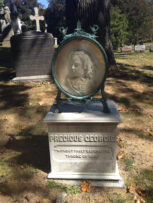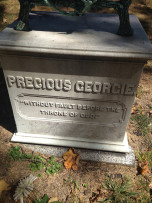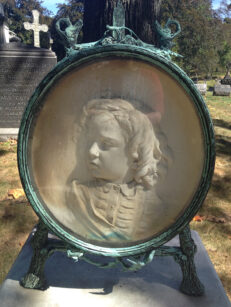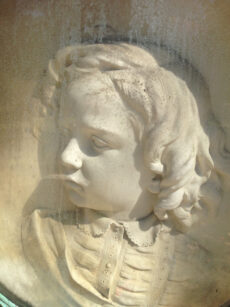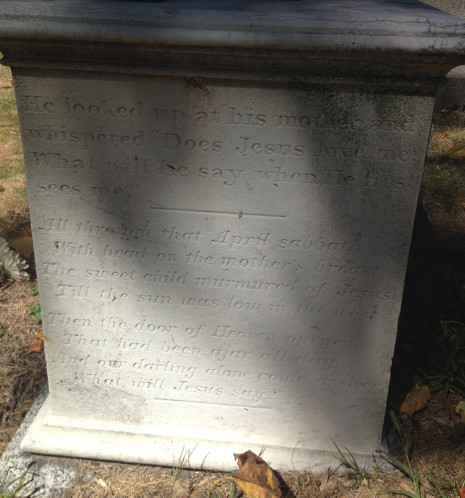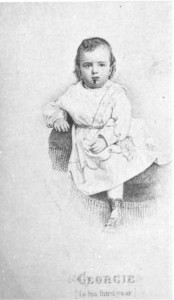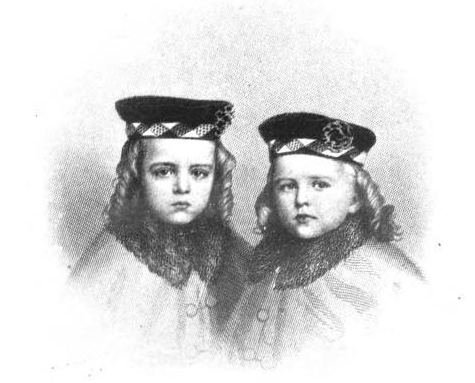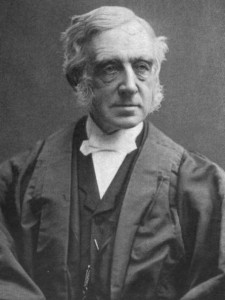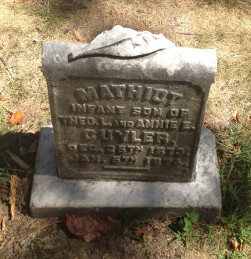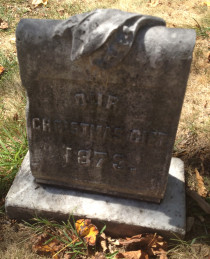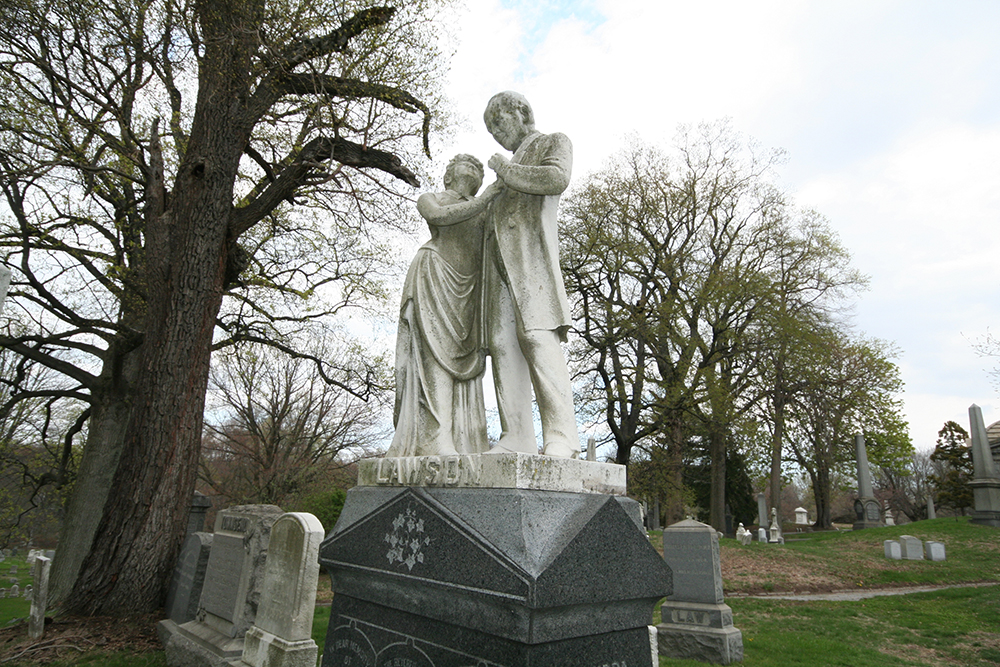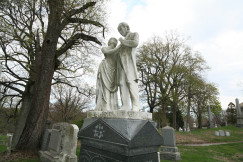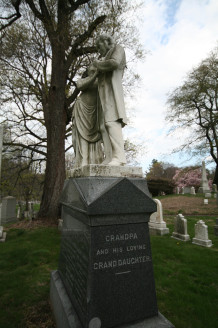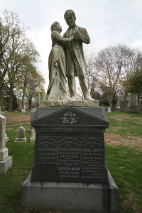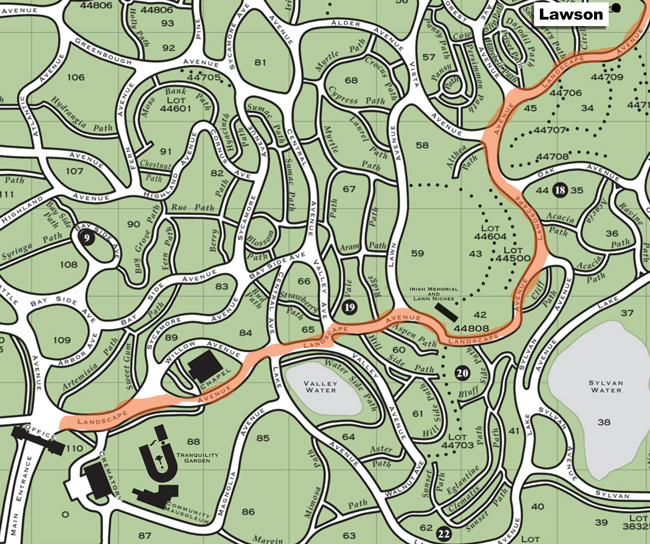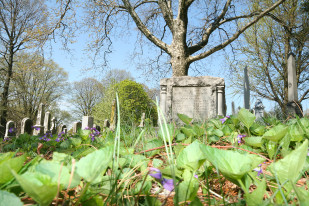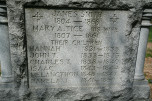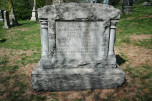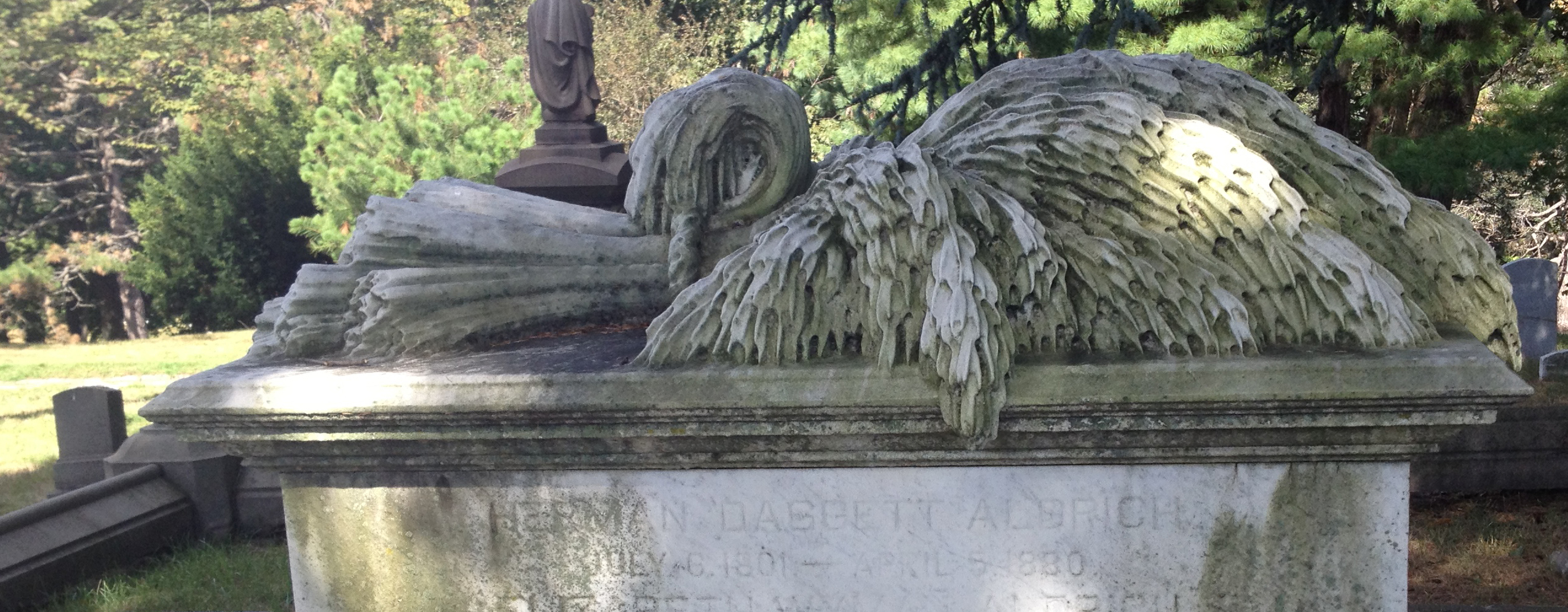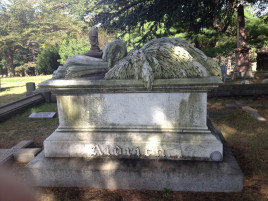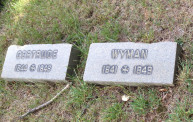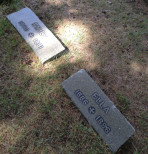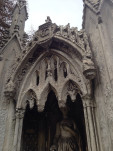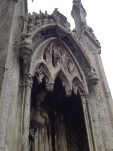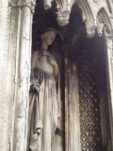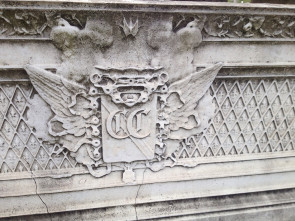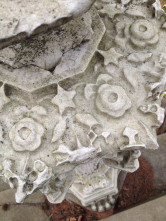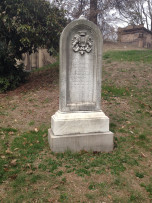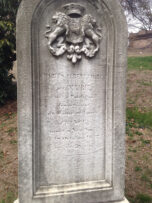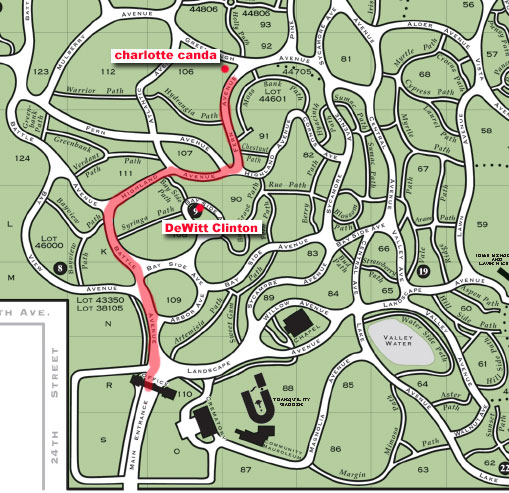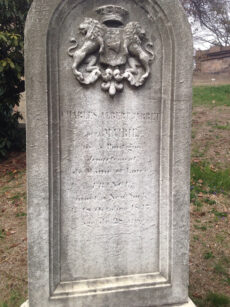I’m surprised that not a bigger deal is made of the fact that Theodore Roosevelt’s first wife and mother–and his parents, grandparents, and a whole slew of other Roosevelts– are buried in Green-wood.
I first heard the story of the tragic deaths of Alice Hathaway Lee Roosevelt (Teddy’s wife) and Martha Bullock Roosevelt (his mother) on Ken Burns’ documentary, The Roosevelts: An Intimate History. It was such a dramatic tale that I decided to read more about it, and lo and behold I found out that they were buried in Green-Wood. Why didn’t I know that? Why aren’t their pictures shown in the margin of the Green-Wood map along with all the other famous residents? This is one of the great stories of American history. I’d rather see Alice Lee Roosevelt on the map than that boring tax dude*.

It’s easy enough to find the Roosevelt family plot–but it’s a bit of a long walk from the front entrance. I’d suggest if you are going to see it, you enter at the 20th Street/Prospect Park West entrance. From there, it is a straight shot across the middle of the cemetery, past Peter Cooper’s family plot, and past the catacombs. It’s located on the corner of Locust and Grape.

Oddly enough, I have wandered around this area of the cemetery a million times (It’s shady and sometimes there are terrifying hawks) and yet have never noticed this huge, yet curiously humble plot. Maybe it’s because most of the stones are so decayed , sadly enough. It is difficult to read nearly all of them.
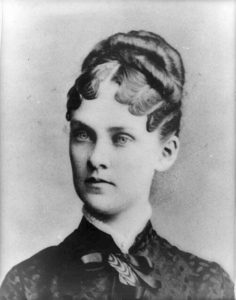 Alice Hathaway Lee Roosevelt (1861-1844) was the beloved first wife of Theodore Roosevelt. She was tall, beautiful, athletic, and charming. She had such a delightful disposition that her nickname was “Sunshine” (a name I have only ever been called sarcastically).
Alice Hathaway Lee Roosevelt (1861-1844) was the beloved first wife of Theodore Roosevelt. She was tall, beautiful, athletic, and charming. She had such a delightful disposition that her nickname was “Sunshine” (a name I have only ever been called sarcastically).
When she was 17, she was introduced to 19-year-old Teddy through a cousin, who was attending Harvard with him. Roosevelt was instantly smitten with Alice, and set about wooing her with a passion. They were married three years later, just after his graduation.
Teddy loved Alice deeply. I mean, deeply. He wrote long, romantic love letters to her, and referred to her as his “purest queen.” In one letter, he wrote:
“Oh, my sweetest true love pray I for nothing but that I may be worthy of you; you are the light and sun shine of my life, and I can never cease thanking the Good God who gave you to me. I could not live without you, my sweet-mouthed, fair haired darling, and I care for nothing whatever else but you.”
It goes on and on like that for several more pages. You can see the actual letter here.
They had a happy life, and planned to have a big family. In 1882, at the age of 22, Alice became pregnant. Teddy was often working in Albany, so she stayed with his mother at their family home in Manhattan during the latter stages of her pregnancy. On February 12, 1884, she gave birth to a healthy baby girl, but immediately afterwards fell quite ill with Bright’s Disease, a serious kidney disorder.
Roosevelt received a letter the next day alerting him to her precarious state of health. He traveled from Albany as quickly as he could through terrible weather to be at her bedside. She died a day later, on Valentine’s Day.
This isn’t even the worst of it. Roosevelt’s mother, Martha Bullock Roosevelt (1835-1884) had been taking care of Alice during the last few months of her pregnancy. She had also recently fallen ill–with typhoid fever. She died 11 hours before Alice, in the very same house. Roosevelt was there for both deaths–going back and forth between the two rooms where his mother and wife lay dying. It must have been absolutely terrible for him.
Here is what Theodore Roosevelt famously wrote in his diary that day:
Heartbreaking.
Roosevelt was devastated. So much so that he forbid anyone around him to ever speak of his young wife again. This event was so painful that he didn’t even mention her in his autobiography. He was completely lost, it seems. He quit politics, left the baby with his sister, and moved out to the Dakota territories to live as a rancher and sheriff for a couple of years.
I tried my best to research the other Roosevelt family members buried there–but most of the stones were so decayed that it was difficult to read the names. What a shame. But here are the ones I could come up with:
Theodore Roosevelt Sr. (1831-1878)
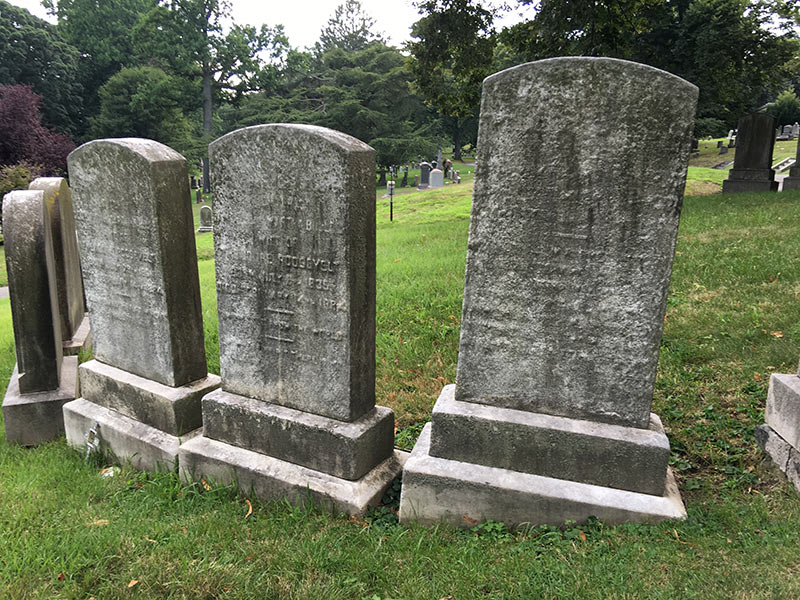
Theodore Roosevelt, Sr.–Teddy Roosevelt’s beloved father, and Eleanor Roosevelt’s grandfather. I could write an entire entry about him alone. This is one great man.
Theodore Roosevelt, Sr.–also known as “Thee”–was described by his son Teddy as “the best man I ever knew. ” He was a model of altruism and morality, and raised his four kids to be kind, goodhearted citizens who help others. One of his major achievements was founding the New York Orthopedic Hospital, so that children with deformed spines could get specialized help. He was also a staunch Union supporter, and a founding member of both the Metropolitan Museum of Art and the American History Museum. Thee died at the age of 46 from stomach cancer, after hiding his condition from his son for months–he didn’t want Teddy to get distracted from his studies at Harvard.
Cornelius (1794-1871) and Margaret (1821-1861) Roosevelt:
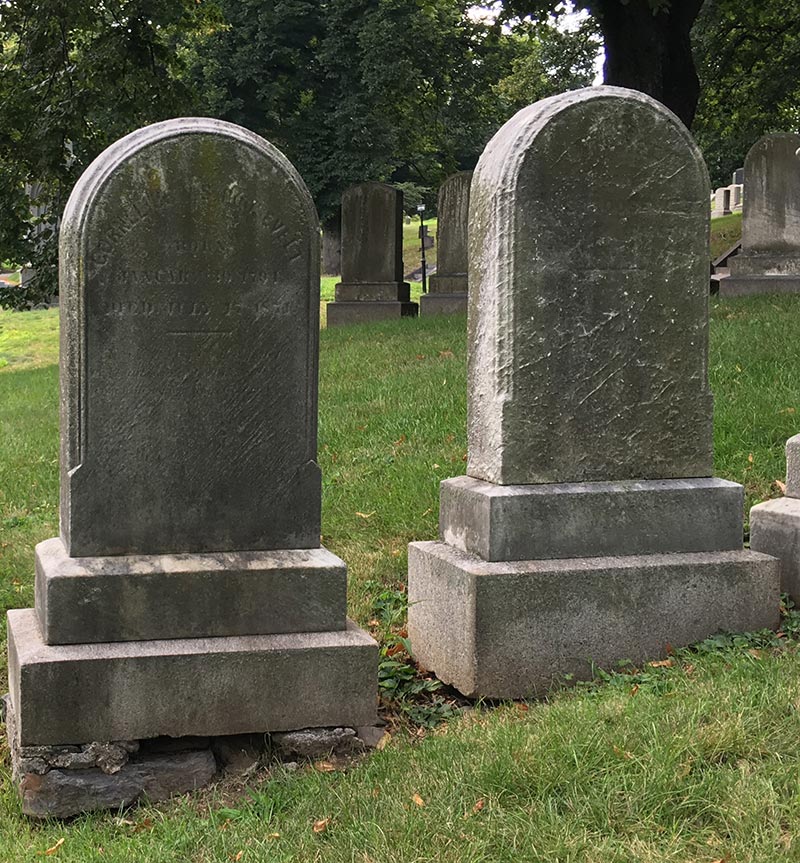
Theodore Roosevelt’s grandparents! Cornelus V.S. Roosevelt was one of the five richest men in New York City. He inherited his fortune from his father, who specialized in real estate and importing plate glass and hardware. He was one of the founders of Chase Bank (formerly called Chemical Bank). His wife, Teddy Roosevelt’s grandmother, Margaret Barnhill Roosevelt is buried next to him.
Gladys Roosevelt Dick (1889-1926)
Gladys Roosevelt Dick was Theodore Roosevelt’s cousin. She died during a fox hunt on Long Island in 1925. Here is the article from the Cornell Daily Sun:
Gladys was a painter, and her work was mainly focused on horses, ironically enough. She would paint horses at the race track, the horse show, the circus, and of course at fox hunts. She was 37 when she died.
Hilborne Lewis Roosevelt (1849-1886)
An interesting fellow–this is another one of Theodore Roosevelt’s cousins. Hilborne, unlike the rest of the Roosevelts, had no interest in making money or being in politics. His love was pipe organs. He invented and patented the first electric pipe organ in the U.S. when he was only 20 years old. Although the Roosevelt family frowned on Hilborne working in the trades, they quickly changed their tune when he started making money. Founding the Roosevelt Pipe Organs Builders company in 1870 with his brother Frank, he established factories in New York, Baltimore, and Philadelphia.
His wife, socialite Katherine Shippen Roosevelt (1883-1886) is buried next to him:
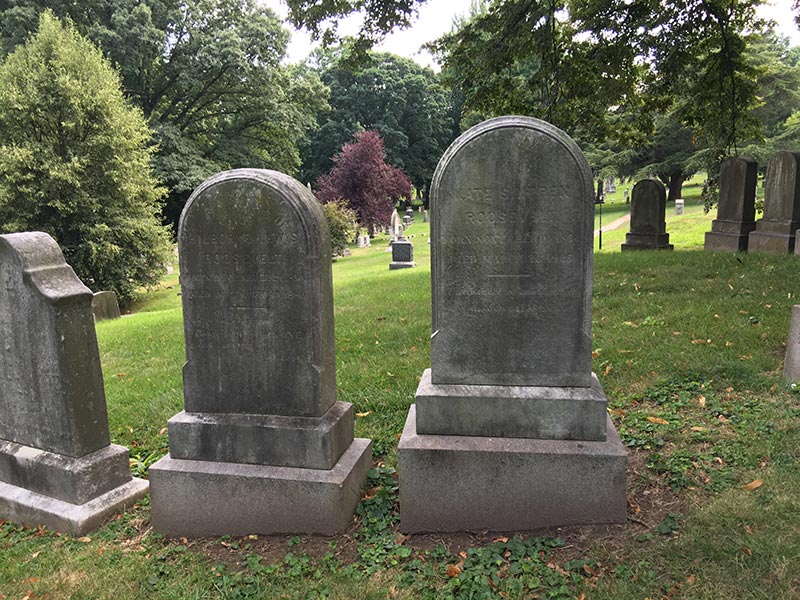
*In all fairness, Henry George is realy not all that boring at all. But nonetheless I’d still rather see Alice Lee Roosevelt on the map!

